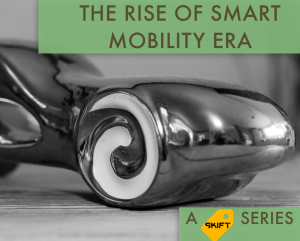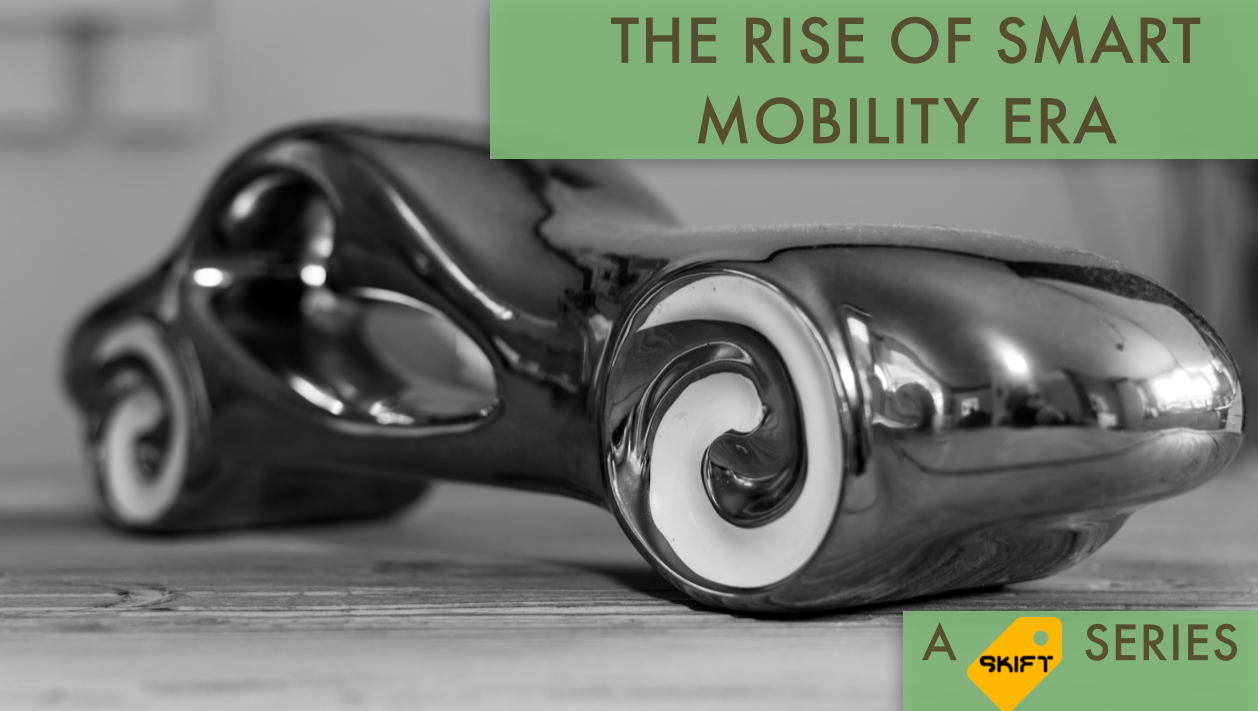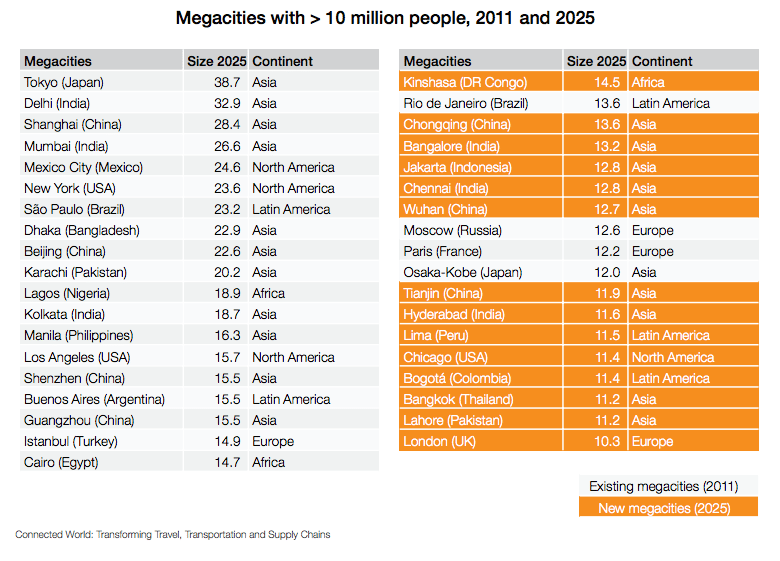Skift Take
We are entering a new mobility era with new players emerging and disrupting travel from the “last mile” up to domestic and regional travel. Mobility providers and aggregators are starting to disrupt the industry by conquering cities, one by one, and aggregating all mode of transportations using digital platforms.
Editor’s Note: Skift is starting a new three-part series on the digital and mobile transformation of transportation, the changing face of cities, and how it has the potential to upend everything we know about travel.
The first part, along with the 75+ slides presentation by the author, is below, and well worth a deep read. You will find additional articles in the coming weeks here.
For far too long, travel has been considered as a clunky luxury.
Planning and buying travel was, and still is, a long and painful process. It forces travelers to split their journey in distinct set of “segments” to be bought and assembled statically or dynamically with different transport operators.
This time is coming to an end.
It is the end of travel as we knew it and the rise of the smart mobility era. Mobile-first travelers travelers are leading this change, and adopting services that would not have existed less than 5 years ago.
This article, first in a series of three, is exploring the reasons of that change.
The Travel Industry’s Growth Is Correlated to GDP
 At a worldwide level, an increase of GDP translates into an increase of global wealth, which increases people’s propensity to travel. If world GDP increases by 1%, then air traffic generally increase by 1.3%. Everything else being equal, a decrease in the average price of air tickets relaxes the consumers’ budget constraints and makes more people economically able to fly.
At a worldwide level, an increase of GDP translates into an increase of global wealth, which increases people’s propensity to travel. If world GDP increases by 1%, then air traffic generally increase by 1.3%. Everything else being equal, a decrease in the average price of air tickets relaxes the consumers’ budget constraints and makes more people economically able to fly.
It is estimated that the price elasticity of passenger air traffic is around -0.6 at world level; that means that if the average ticket price decreases by 1% then air traffic to increase by 0.6% (see Airbus Market Forecast updated each year to learn more).
An Oxford Economics study, commissioned by Amadeus in 2014, predicted the travel industry would grow 5.4% per annum for the next 10 years, outstripping global GDP. By 2023 the total share of global outbound expenditure is predicted to reach 20%, up from 1% in 2005. Elsewhere, Brazil, India, Russia, Turkey and Indonesia were cited as the markets with the biggest potential for growth. Chinese travelers to U.S. will rise about 140% in next 4-5 years, India 54%, Colombia 56%, Brazil 50%!
A New Urbanized and Connected World
The world is entering the final phase of a period of explosive demographic growth that started mid-1960’s and will lead to an increase of population to 8 billion by 2025 (source UN DESA). Asia, Africa, and Latin America will account for virtually all population growth over the next 20 years; less than 3 percent of the growth will occur in the West. This demographic, with the GDP growth of “emerging countries” will lead to the rise of a new, and younger, middle class, eager to travel.
This new middle class will live in cities. From 1985 to 2010 the number of urban centers/cities with more than 5 million inhabitants has grown from 27 to 61 and by 2025, the U.N. predicts nine new megacities, with a population of over 10 million each, just in Asia.
Numbers are astounding, between now and 2030, the McKinsey Global Institute estimates that for example India must build a new Chicago every year to absorb the millions of villagers streaming from the countryside in search of work.
One of the first things these new immigrant travelers will face daily is a mobility challenge in their own city, suburbs, region and country. Crowded cities will have to organise mobility and at the same time avoid pollution, overcrowding, increase security and improve transportation infrastructure. Countries will have to build new transportation infrastructure such as trains, buses and airports to sustain their development.
The 20th Century Was the Era of Nations, the 21st Century Is the Era of Cities
The smart city is not just a buzzword anymore. Cities like Rio de Janeiro, backed up by private investors in search of long time returns, are now involved in building smart solutions for daily local commuters and tourists alike. In U.S., the concept of “Mega Regions” is used to organize the evolution of transportation. Mega Regions are networks of metropolitan regions with shared economies, infrastructure and natural resource systems.
Europe, China, India are also creating plans and providing funding to advance the transportation networks and facilitate rapid and environmentally feasible people and goods movement.
The concept of Aerotropolis, imagined by American academic John D Kasarda, defines new kinds of city hubs. An aerotropolis is a new urban city which places airports in the center with cities growing around them, connecting workers, suppliers, executives, and goods to the global marketplace. Paris, London, Denver, Dubai, South Korea’s New Songdo City or Panama are already in various phases of building themselves up as an Aerotropolis. Every city wants to be the main hub of the new worldwide transportation network.
Conquering the Last Mile
In the crowded megacity, travel involves more than just flights and hotels you can book weeks in advance. It begins when you leave home every day: it is about the full daily journey from your home to your final destination and back, taking into account real-time traffic evolution. The door-to-door journey then, in a smart city context, is adapted and re-planned depending on different contexts: user context (my health, my agenda, my budget), city context (weather, pollution), traffic context, etc.
The journey and its booking should also be as seamless as possible, offering solutions to problems when they happen, and if possible even before they happen. In order to offer this richness of solutions, cities need to offer several options to the mobile-first travelers, all bookable through digital channels and available on-demand, live. Different models of transportations should be available so that options could be proposed based on the context. In the modern city of today, the transportation network richness is key. And if it does not exist, new entrants will provide it. For example, Leap Transit in SF providing bus solutions in non covered area or Padam in France to offer bus at night.
The race is on to become the city mobility platform of choice, by offering aggregation of all mobility services (schedule, traffic, booking), and by contributing to the building of smart cities by turning over the data collected back to the local representatives for them to create better long term policies and solutions.
Smart Mobility Providers for Crowded Cities
Smart mobility providers are popping-up everywhere in the world, targeting all our transportation needs. They are new entrants (like Uber, SpaceX, Kuaidi Dache, OlaCabs) or established players in other business domains such as car manufacturers (BMW, Daimler, Ford), public transportation (Xerox Transportation, Keolis, Transdev, etc) or shared transportation services (bike, car, motorcycles, boats, etc.).
Bus service are also on the rise, since they are less expensive than train and planes, and add services that are much appreciated by the Gen Y generations. Berlin to Munich with MeinFernbus costs 22 euros (wi-fi included), instead of 142 euros by train Deutsche Bahn. In France, a new law (Macron’s law) has deregulated long distance transportation to enable more solutions at à lower price.
Other interesting solutions are enabling new usages, like in the city of Porto in Portugal, where hundreds of buses and taxis are also now Wi-Fi hot spots for tens of thousands of riders. The solution and routers provided by Veniam also collect data from the vehicles (and from sensors on trash bins around the smart city) and relay it back to city offices to help with civic planning.
The Rise of Smart Mobility Aggregators
On the traveler side, it is of paramount importance to be able to discover, choose and book one or several mobility providers solutions in real time to complete their journey within a given area (around me, in a city, etc.). New mobility operators, what it being termed as mobility aggregators, are emerging and building both digital platforms (including on-the-go payment and ticketing systems), and physical mobility networks (parking zone for bike or car sharing).
The objective for them is to become the mobility hub for any transportation need, and to offer one payment solutions for multi-mode of transportations.
One of the most advanced mobility aggregator is German multinational automotive company Daimler, with it Moovel platform, its ridescout mobile app, its car sharing services car2go and car2go black services, and its parking aggregator solutions Park2Gether.
One of the best example of a mobility provider and aggregator is a new transportation startup Shift that created from the ground up its own intelligent mass private transit system in Las Vegas, which is a fleet of private bicycles, tiny smart cars, Teslas, shuttles and on-call valets, which are used to offer unlimited short trips to subscribers, with 20 minutes free per trip, pickup and dropoff. The company, whose services are subscription based, guarantees that users can be on their way with the most efficient transportation means within five minutes of summoning the app.
The Start of a Mobility Era
We are entering a new mobility era with new players emerging disrupting travel from the “last mile” up to domestic and regional travel. Mobility providers and aggregators are starting to disrupt the industry by conquering cities, one by one, and aggregating all mode of transportations using digital platforms.
Travel is being commoditized and offered as an over the top service by “software cloud platform based companies” (Google, Alibaba, Rome2Rio) and mobile only companies (Moovit, CityMapper, Ridescout).
These providers plan to offering mobility as a service: a door-to-door mobility service that is globally scalable and reaches multiple cities. In a door to door and multi-mode of transportation world, direct connections between services is the rule and live data exchange is required to enable journey evolution “in context” from the traveler’s agenda, transit app or mobile operating system.
About the Author: William El Kaim was till recently the Technology Marketing Director of Global Product Innovation at Carlson Wagonlit Travel in Paris, where he contributed to the invention of several travel products and filed a patent. Currently on sabbatical, he specializes in technology innovation in the transport and travel industry. He holds a Ph.D. from University Pierre and Marie Curie (Paris, France) in software engineering.
The Daily Newsletter
Our daily coverage of the global travel industry. Written by editors and analysts from across Skift’s brands.
Have a confidential tip for Skift? Get in touch
Photo credit: Cities will be structured for smart mobility, with rise of digital.

